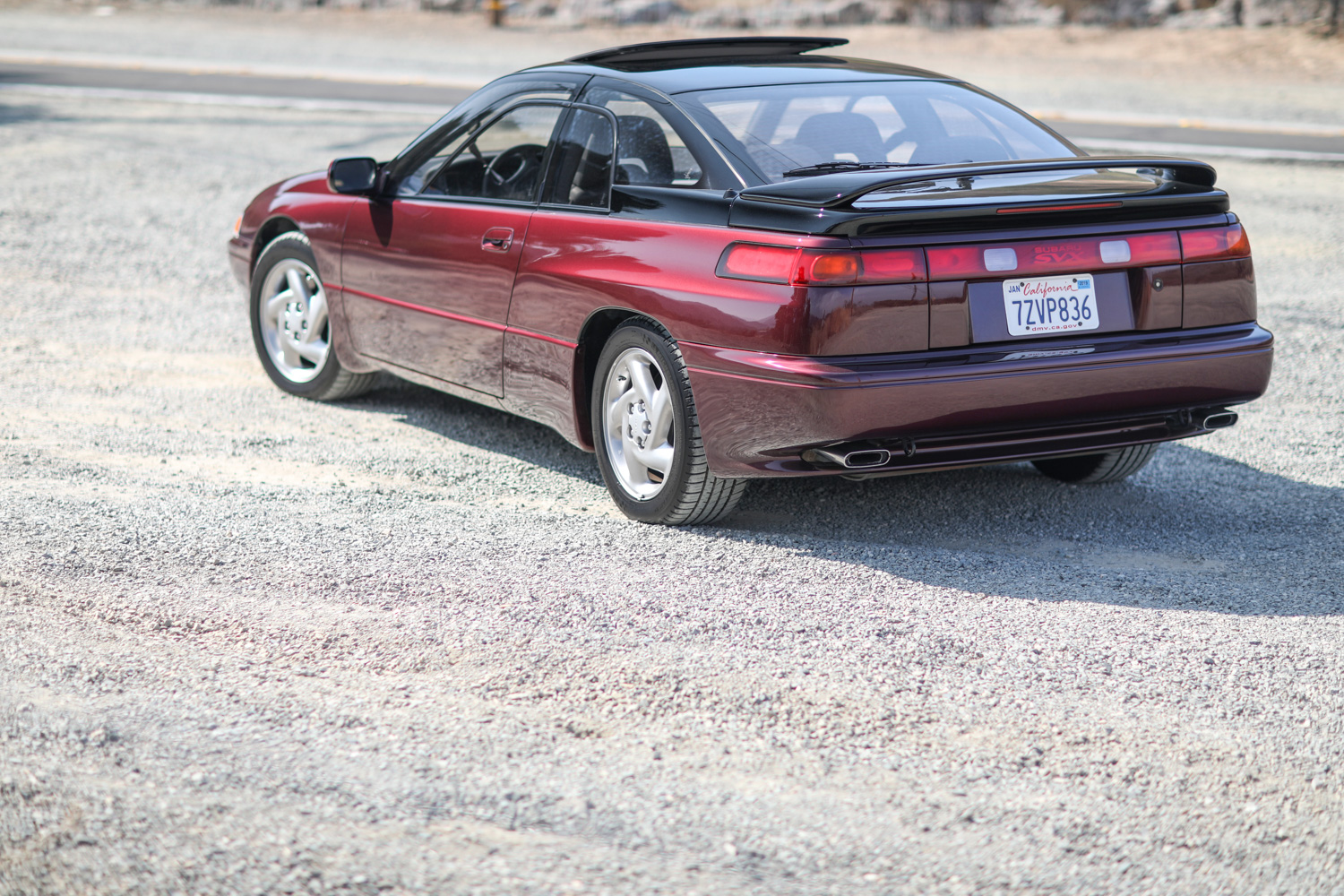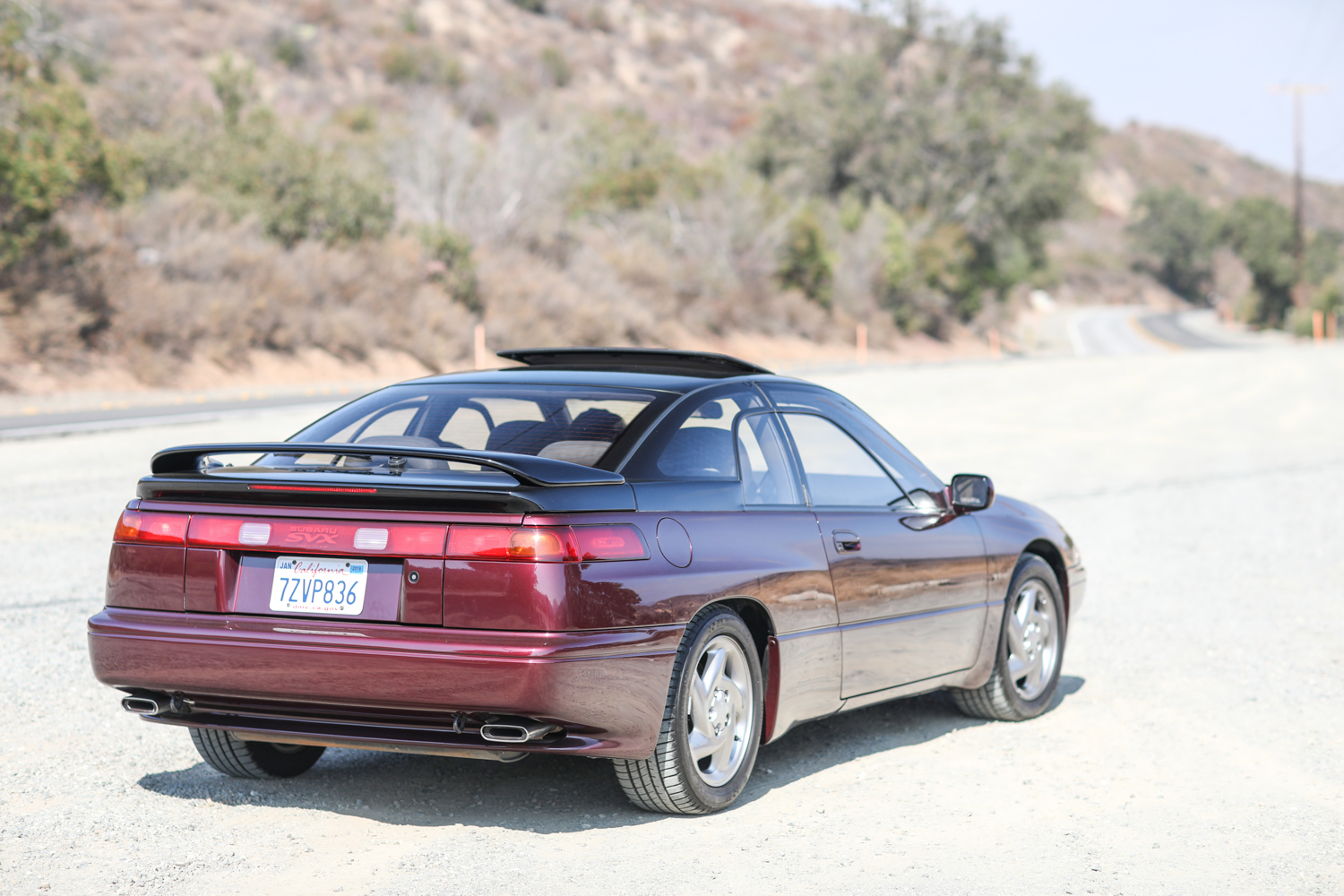The Subaru SVX is the weird futuristic car we didn’t appreciate enough
Somewhere between the recent surge of all-wheel drive crossovers and the marketing genius of dog-focused commercials, Subaru has been on an absolute sales tear in the last decade. There’s nothing particularly special about the Outback, Forester, and Crosstrek, either. In fact, it’d be fairly easy (if it wasn’t for such an absolute windfall of profit) to criticize Subaru for playing it too safe, especially in the design department. But Subaru’s caution comes from a very expensive lesson in the early 1990s—it was called the SVX.
As business was booming for parent company Fuji Heavy Industries in the late 1980s, Subaru got ambitious about where the company might be headed. Why not make an all-wheel-drive, flat-six-powered, four-seat luxury grand tourer? In the words of Kurt Vonnegut, “So it goes.”
Penned by none other than Giorgetto Giugiaro, the SVX first appeared in concept form at the 1989 Tokyo auto show and reached production in 1992 looking damn-near identical to the show car. It was angular and yet also smooth and flowing. Expressive in its contrasting two-tone paint and somehow simultaneously distinguished.



But along with the concept-car style came concept-car weird. How about the brave window-within-a-window feature? While brilliant for its reduced wind noise, fantastic outward visibility, and the ability to open the small window in the rain without getting wet. This was not the first car to attempt this scheme, but the look did not catch on. Anywhere.
In era of peak Japanese sports car the SVX was outgunned by contemporaries like the Acura NSX, Nissan 300ZX, Mazda RX-7, Mitsubishi 3000 GT, and Toyota Supra. Compounding challenges against competitors, the SVX was also an oddball in the Subaru lineup, where the sticker price rang up nearly $10,000 higher than anything else in company showrooms. Sticker shock was so deleterious to sales that Subaru soon added a cost-cut front-wheel drive model, but the damage was already done, and by the end of 1996 the SVX got the axe.
Driving a top-trim 1992 Subaru SVX LS-L in 2018, when these cars can be found all day long for under $10,000 in concours condition, the car seems like an absolute steal. The 230-hp flat-six feels generous with its 228 lb-ft of torque, as the 3.3-liter mill responds quickly to throttle inputs and the all-wheel-drive system digs in nicely off the line. The car particularly shines on the highway, where it happily chugs along at 80 mph and does not mind quick passing maneuvers well north of that speed. Smooth as it is, the SVX is hardly a speed demon. The four-speed automatic transmission is more than little lazy, and the car saunters past 60 mph from a standstill in less than 8 seconds. Nor is the SVX an amazing corner-carver, although the relatively low center of gravity and all-wheel-drive system do inspire some confidence on a twisty road. Push it too much though, and the car will show its tendency to understeer.




All that said, people don’t often talk about how endearing this car is, especially when it comes to the interior. The four circular gauges outside the central speedo and tach lend the dashboard a flair of the futuristic, as does the wrap-around interior cockpit design. That gearshift-like parking brake handle is also delightfully strange. Quirky. And who knew this car had a kind of suede, Alcantara-like fabric alongside the ubiquitous ’90s Japanese plastic and chintzy wood paneling?
These cars are cheap to buy, but the ownership is not without hurdles. Subaru did not sell many examples of the SVX, and the low number of survivors means OEM parts are essentially nonexistent. There is a dedicated but small owner community that you’ll need to tap into to get what you need when things break. (And the original transmission clutch packs probably will.) This particular car—which is exceptionally clean—was bought in Texas last year with just 67,000 miles on the clock, and since it’s received a front-end repaint, JDM-style grille and badging, and a new set of Michelin A/S 3+ rubber. Inside, craftily hidden in the small center-stack compartment is a Clarion FX508 touchscreen infotainment system with Android Auto and Apple CarPlay.
We can raise our eyebrows and snicker now at the SVX as a bizarre aberration that was always doomed for failure, but remember that the car came right on the heels of Lexus completely shaking up the luxury car paradigm in 1989 with the LS400. And in 1991, Ferrari suddenly was chasing its tail because Honda—the company that makes the Civic—just put the supercar world on notice with the Senna-approved NSX.
No, the SVX didn’t usher in the future that Subaru hoped it would. But 26 years after Subaru sought to break its economy-car mold, the SVX is an affordable time machine to a weird, wonderful future that never was.













